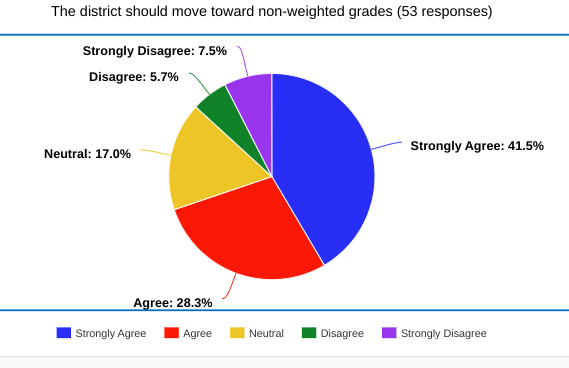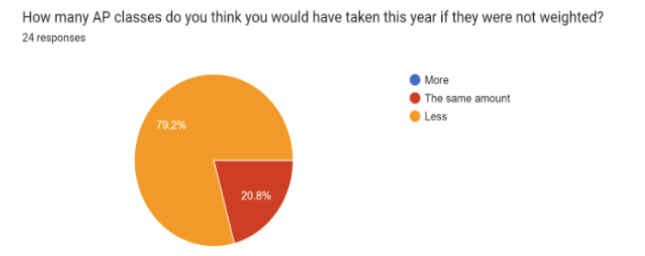District Communication: Out of Touch with Students, Families, and Staff
Photo from Hamilton School District.
Aadhitya Balaji and Nolan Doherty
Efficient communication is vital to any group, team, or organization. It goes without saying that communication within a school district is critical so students, teachers, and parents are informed at all times. Within our school district, there have been many policy and scheduling changes recently. Spanning from reworking the grading scale to modifying final exam schedules, these changes within the district directly impact the students and teachers. Concerted efforts toward communicating these changes by the district administration is necessary to ensure the district’s population is kept aware of updates that directly affect them. Regardless of whether or not students, parents, or teachers agree with the changes, ensuring that they are not kept in the dark about them is important. While we recognize that the district has been making coordinated efforts to communicate these changes, we believe that there is room for improvement.
Delayed Notification
When approaching this matter, it is important that we shed some light on the issues that we believe could be improved upon. To begin, much of the communication surrounding scheduling changes seems to be in the spur of the moment. For example, the final exam scheduling change was pushed out to students via Infinite Campus on the 8th of January, just a couple of weeks before final exam week. The scheduling change consisted of removing the final exam half-days at the end of the semesters, and allowing teachers to have the discretion as to whether or not they assign an exam for their class. More information on this impactful change is discussed in a Charger Press article written by Sage Osesek. Although the changes were communicated, this scheduling change and rationale could’ve been announced well in advance of final exams. Even though there may have been smaller scale announcements, there was no widespread announcement for the students and parents until January 8. The communication of these large-scale changes needs to reach the entire student body and community if the district hopes for these announcements to be effective. It is less efficient and less viable if only parts of the district’s community knows about a change that affects all students.
Additionally, the district’s new travel schedule mandating one week of home advisement every three weeks was announced to teachers in August, and students were notified on the first day of school. All in all, not much harm was done by these late announcements. However, as a previous Charger Press article written by Nika Stacey and Aanya Ranasaria noted, the music course scheduling announcement was sent out far too late for the magnitude of change it was bringing. These dramatic changes left many students feeling as if they had to pick between their academic goals or continued participation within the music program. With students being left with a handful of weeks to make their decisions and adjust their scheduling plans for the new system, they were entitled to their frustrations.
Unsound Surveying
When collecting information to form decisions on prospective policy changes, surveying the student population is an excellent strategy. The district can greatly benefit from opinions coming directly from the students, as they allow for a diversity of opinions derived from the population that is affected by proposed revisions to school policy. Our district frequently conducts both parent and student focus groups to survey and gather opinions from the community. This method can be extremely beneficial for the administration to gain insights into what the students and parents would like to see for the future of our school. In order to make a decision on the grading and ranking system changes, the district facilitated a focus group of high school students during the morning of late start Wednesday and during AP Focus. The resulting data was presented to the school board, where the decision to implement the unweighted grading system, new scale, and new ranking system was finalized.
Above is the data collected by the administration in the mentioned focus groups. As the data represents, many students advocated for the switch toward non-weighted grades. Almost 70% of the students surveyed agreed to some degree of a shift to the proposed change. Arguably, this data reflects the overwhelming sentiment that the district should enact an unweighted grading policy.
However, as AP students, we feel as if one key downside of this system was overlooked: enrollment. AP class enrollment is lower when compared to other, non-AP courses. Though AP students represent a smaller portion of the population, these students have already made the decision to take AP courses, and their viewpoints and course choices help dictate how many AP classes run. Student participation in AP courses has also been commended by earning Hamilton a Silver distinction on the 2023 AP School Honor Roll, which shows that AP students are achieving success and that their viewpoints should not be discounted, though they may be the minority. Moreover, these students have been expressing their opinions on the matter of unweighted grades. Tyler Canham’s The Weight of an Unweighted System and Sage Osesek’s The 5.0 Grading Scale Change demonstrate the variety of perspectives that AP students have to offer on the issue.
Mr. Weiss, one of our AP teachers, conducted a survey within his classrooms with data representing this issue. Mr. Weiss teaches AP Physics 1, AP Physics 2, and AP Physics C–arguably three of the hardest AP courses offered at Hamilton. Within these classes are highly motivated students, some of whom are taking college level physics courses aligned with their future goals or aspirations. Many of these students, especially juniors and seniors, are taking multiple AP courses. In Mr. Weiss’s survey results, an alarming trend arose. All of these students were presented with the question: “How many AP classes do you think you would have taken this year if they were not weighted?” Across his three classes the results show that students in AP Physics would most likely either take fewer or the same amount of AP courses.
AP Physics 1 - 24 Students
AP Physics 2 - 13 Students
AP Physics C - 31 Students
These results present an aspect of unweighting grades that the district may have overlooked–that students may take fewer AP courses–leaving some students feeling as if the district surveys were rushed and not fully representative of the complexity of a significant change. Although the change to unweight grades has since been repealed due to the UW college direct admissions initiative, we believe that this situation could’ve been handled better with an improvement in communication.
The student opinion and feedback process is a form of communication within the district, and it is one that the district claims it values. We know that the district does value student opinions, as it wouldn’t conduct focus groups otherwise, but the overall student feedback process could use some improvements. In an interview with Dr. Mielke, Hamilton District Superintendent, on district communication, Dr. Mielke stated, “If I'd interview 10 people in the surveys [and they were split] five to five, I'm like, I have to interview a lot more. If you interview 10 people and all of a sudden you're getting eight and nine people saying the same thing, then all of a sudden sometimes you see there may be less of a need to continue going on because of where they're going.” The argument being made here is that the results portrayed by the focus group data was enough to base the decision of unweighting grades on. However, with issues such as class enrollment being overlooked, the student feedback process loses value. Additionally, the 53 students that were surveyed are only 3.5% of Hamilton’s enrollment for the 23-24 school year. This may still be within statistical significance, but when you factor in the populations, a glaring issue presents itself. A majority of these students were freshman, with the potential for some sophomores, during the mornings of late-start Wednesdays (around 33 out of 53). In comparison to juniors and seniors, underclassmen have had less time to adjust and understand the current weighted grading system and haven’t taken as many AP classes. Although the overall majority of the AP Focus students voted for the unweighted system, the population breakup of this sample is still unsound. Overall, these surveys should have covered all aspects of the unweighted system (including the potential downsides), instead of just being for or against it.
Flawed Focus Groups
With the district stating that they value student feedback, the students in focus groups should feel the same way. Natalie Olson, a junior at HHS, was a part of an AP focus group for rubric changes. She stated the following while accounting for her experience: “We started by going into the IMC pit to discuss the rubric changes. I was under the impression that the focus group was to evaluate if the change was necessary. In reality, we were given a rubric to read and then asked follow up questions about our understanding. The questions were limited to if the rubric made sense, not if we thought it could be applied to classes. I tried to bring up topics about if the change was necessary, but the conversations never got very far and there was no support from the adults to keep the conversations going.” Disregarding the line of questioning within these survey groups, the main complication here is that there was no support from the adults to continue conversation on the changes. This seems counterintuitive, as these conversations would help the district achieve a well-rounded understanding of students’ opinions and feelings on the prospective changes. The whole point of conducting focus groups is to garner feedback and keep students engaged in the process of policy changes that directly affect them. As soon as the platform for student opinions takes a hit, these focus groups become increasingly obsolete.
The majority of these issues take simple communication fixes that allow for the success of the district’s organization, policy changes, and student body. We believe that early communication of large scale changes, more developed surveys, increased organization for student discussions, and a better regard for student opinion/expression for policy change are necessary in order for the district to begin to resolve the existing issues that have been presented. Hamilton’s school district has the potential to be much more organized and cohesive when attempting to enact policy changes, and we believe that these changes would fuel the fire for an overall more successful and interconnected district.
Stay tuned for Part 2 of this article series on Hamilton school district communication.










